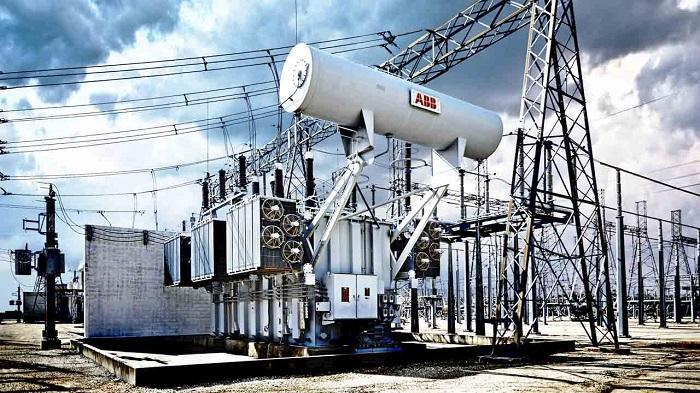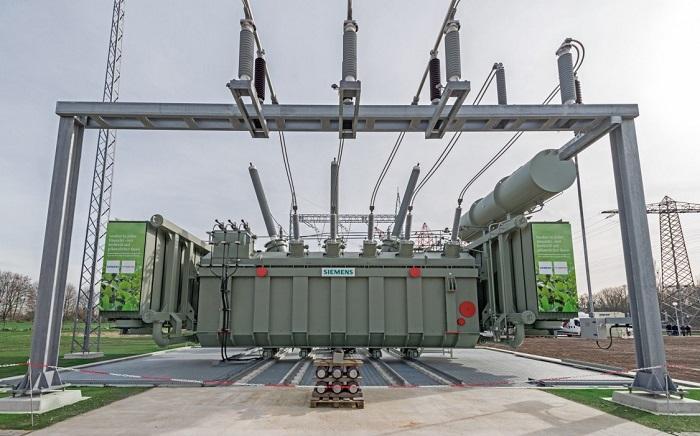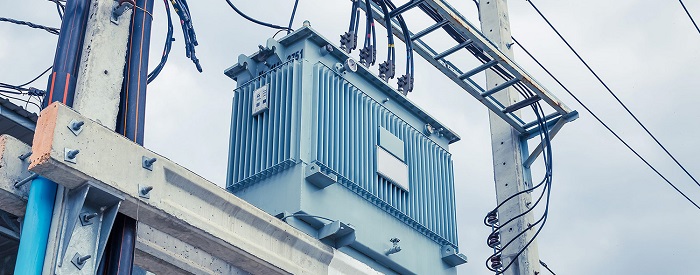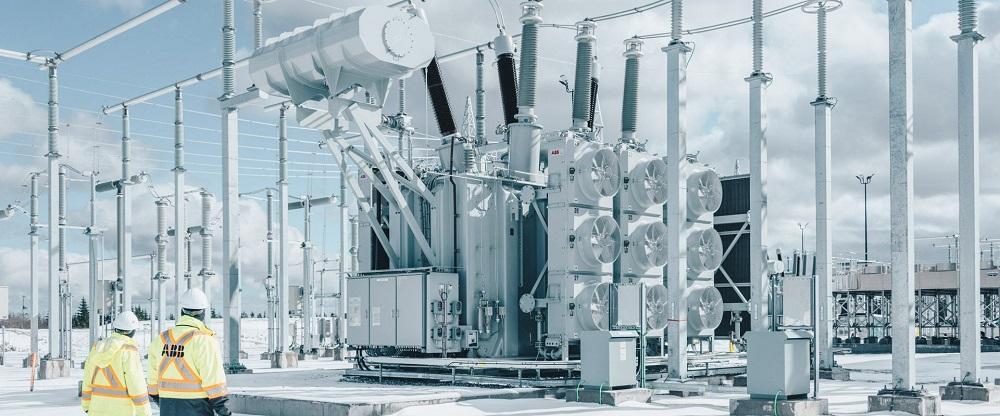Among all the innovations that the world of engineering has experienced and given birth to, a transformer is the extraordinary and one of the most vital innovations. It is an electromagnetic static device that is used to transfer electric power in one circuit to another one with changes in voltage level but no fluctuation in frequency. It is called static because there are no rotating or moving components in its construction. Transformers follow the rules of electromagnetism introduced by Michael Faraday. In the following sections, we will discuss different types of transformers. Linquip wants you to know that although transformers differ in their designs and construction, they all adhere to almost the same working principle. Stay with us till the end.

Types of Transformers based on Voltage Level
In terms of construction, a Transformer can have multiple types. Although there is no electrical connection from one side to another side of a transformer, the two completely and electrically autonomous coils can direct the electricity by the electromagnetic transition. Transformers can be conducted in a way that they can change the voltage level from the primary side to the secondary side. Contingent on the voltage level, transformers are categorized into three types. In the following sections, we are going to elaborate on these three types in detail.
-
Step-Down Transformer
Both Electronics and Electrical domains enjoy the benefits of step-down transformers. What a step-down transformer does is to change the primary voltage level to a lower one and delivers it to the secondary output. The ratio of primary and secondary windings make it happen. In this type of transformers, the number of coil windings across the primary side is higher than the secondary side. so, the overall ratio for winding of these two sides is always more than 1.
If you have noticed, in electronics, most of the home applications run on 5V to 24V. in some cases, you will find some applications with a 48V usage. To change the outlet power of 230V AC to the desired and lower voltage level, Step Down transformers are needed. In instrumentation as well as in many electrical sets of equipment, the primary need for the Power sectioned a step-down transformer.
Electrical distribution systems working on very high voltages to make low-loss and cost-effective solutions for long-distance electricity delivery surely possible. In these systems, step-down transformers are used. So, notice that most of the time, step-down transformers are used to turn the high voltage to a low voltage in supply lines.
-
Step-Up Transformer
As the name implies, what a step-up transformer does is exactly the opposite of what a step-down transformer does. A step-up transformer is a type of transformer whose job is to increase the low voltage of the primary coil to a high voltage in the secondary coil. Again, the ratio of primary and secondary windings makes the change or conversion of voltage level. In the working principle of a step-up transformer, the overall ratio of the primary and the Secondary winding is less than one. It means that the number of turns of coils in the secondary winding is higher than the primary winding.
In electronics, stabilizers, inverters, and so many other devices benefit from the existence of step-up transformers where low voltage needs to be converted to a much higher voltage.
Electrical power distribution also benefits from the use of step-up transformers. High voltage is required Power distribution in long distances needs high voltage flux. so, this kind of transformer is required in the grid to step up the voltage level before the distribution.
-
Isolation Transformer
The isolation transformer does not change the level of voltage. As the number of turns in primary and secondary windings of isolation transformers is the same, the primary and the secondary voltage of an isolation transformer is always the same. the reason is that the primary and the secondary winding ratio is always equal to 1.
The isolation transformers’ job is to isolate the primary and secondary. This type of transformers is used as an isolation barrier. Where isolation transformers are used, the conduction occurs only by the magnetic flux. the main reason for the use of isolation transformers is safety purposes and the cancelation of noise transferred from primary to secondary or vice-versa.
-
Toroidal Core Transformer
Toroidal core transformer uses toroid shaped core material, such as iron core or ferrite core. Toroids are ring or donut shaped core material and widely used for superior electrical performance. Due to the ring shape, the leakage inductance is very low and offers very high inductance and Q factors. The windings are relatively short and weight is much less than traditional, same rating transformers.
Transformer Types Based on Winding Arrangement
Another factor making differences in types of transformers is the arrangement of winding. Let’s see how transformers could differ in their winding arrangements.
-
Two Winding Transformer
The transformers based on windings like two winding transformer includes two separate windings for every phase such as the primary & secondary. Here, the primary winding can be supplied through the input of AC whereas the secondary can be connected through the load. These two windings are isolated electrically but coupled magnetically.
The induced EMF within the secondary winding is because of the varying magnetic flux that can be caused by the changing current within the primary winding, which is also called as mutual induction. So, the o/p voltage is simply because of the induction. This voltage mainly depends on the windings ratio and it can raise or lessen the input voltage.
-
Auto Transformer
Standard transformers have primary and secondary windings placed in two different directions, but in autotransformer windings, the primary and the secondary windings are connected to each other in series both physically and magnetically as shown in the figure below.
On a single common coil that forms both primary and secondary winding in which voltage is varied according to the position of secondary tapping on the body of the coil windings.

Transformer Types based on Core material
All the transformers transfer energy by carrying electromagnetic flux through a core material. The density of flux completely depends on the core materials. So, Different core materials lead to different flux density. Based on the core materials, we can categorize transformers into three main types. These types are used in the power and electronics domain.
-
Iron Core Transformers
One of the core materials which is used in transformers is iron. Iron core transformers are made up of several soft iron plates. As the magnetic properties of iron are great, the electrical flux in iron core transformers is very high. The highness of electrical flux means great efficiency.
The shape and the size of soft iron core plates can be various. The structure is like this: the coils of the primary and secondary wrapped on a coil former which itself is mounted in soft iron core plates. Counting on the size and shape of the core, you can find different types of core plates in the market. Some of the most common shapes for iron plates are E, I, U, and L. These plates are thin, and to form the actual core, multiple plates are bunched together.
-
Ferrite Core Transformer
Due to the high permeability of ferrite, it is another material that is used to form the core of transformers. Ferrite core transformers present very low losses in the high-frequency application. Therefore, this type of transformers is used in high-frequency applications such as in switch-mode power supply (SMPS), RF related applications, etc.
Ferrite core transformers, depending on the application requirement, are also presented in different types of shapes, sizes. This type of transformer is commonly used in electronics rather than electrical applications. The E core is the most common shape in the ferrite core transformer.
-
Air-Core transformer
In the air-core transformer, we do not see any physical magnetic core as the core material. The flux linkage of the air-core transformer entirely happens by using the air.
In this type of transformers, the primary coil is fed with alternating current producing an electromagnetic field around it and the secondary coil is put inside the magnetic field. Based on the Faraday law of induction, the secondary coil is induced with a magnetic field that is used to power the load.However, in comparison to a physical core material such as iron and ferrite used in transformers, air-core transformers create low mutual inductance.
This kind of transformers is mostly used in portable electronics as well as Radiofrequency related applications. Because of the absence of physical core material in its construction, it is very light in terms of weight.

Other Type of Transformers
There are some other types of transformers that we preferred not to put them in a determined category. In the following section, you will get acquainted with three more kinds of transformers. Stay with us till the end.
-
Single-Phase Transformer
The single-phase transformers are made up of two types of windings: the Primary winding to which the alternating current supply is transferred and the secondary winding connected to the load. This kind of transformers transfers the AC power from one circuit to the other with a constant voltage frequency and variation.
-
Three-Phase transformer
Three-phase transformers are three single-phase transformers that are coupled together and act as a three-phase transformer. These transformers are mostly utilized in the industries to generate electric power, transmission, and distribution.
-
Power Transformer
Power transformers are usually larger transformers in size transferring the power to the public electricity supply or the substation. A power transformer is used to make a bridge between the power generator and the primary distribution grid. What this transformer does is to change the low voltage high current to a high voltage low current.
-
Instrument Transformer
Generally, an instrument transformer is called an isolation transformer or measurement transformer. This is an electrical device mainly used to change the level of voltage and current. The main purpose of this transformer is to isolate securely the secondary winding once the primary winding has high voltage & current supply so that the energy meters, relays, or measuring instruments are allied toward the secondary winding of the transformer which will not get injured.
-
Distribution Transformer
This type of transformer has lower ratings like 11 KV, 6.6 KV, 3.3 KV, 440 V and 230 V. They are rated less than 200 MVA and used in the distribution network to provide voltage transformation in the power system by stepping down the voltage level where the electrical energy is distributed and utilized at the consumer end.
-
Current Transformer
The current transformer is used for measuring and also for the protection. When the current in the circuit is high to apply directly to the measuring instrument, the current transformer is used to transform the high current into the desired value of the current required in the circuit.
The primary winding of the current transformer is connected in series to the main supply and the various measuring instruments like ammeter, voltmeter, wattmeter or protective relay coil. They have accurate, current ratio and phase relation to enable the meter accurately on the secondary side. The term ratio has a great significance in CT.
The primary coil of the distribution transformer is wound by enamel coated copper or aluminum wire. A thick ribbon of aluminum and copper is used to make secondary of the transformer which is a high current, low voltage winding. Resin impregnated paper and oil is used for the insulation purpose.
Oil Cooled and Dry Type Transformer
At present, there are two kinds of transformers that are mainly used like dry type and oil type transformer. A dry-type transformer utilizes air like a cooling medium whereas liquid-cooled utilizes oil. Even though both types of transformers have similar end results but there are several differences among them like maintenance, cost, noise, efficiency, recyclability, location & voltage capacities.
By considering the above-mentioned variables into account, oil type transformers are the best option. But oil units basically cannot be utilized in any condition. The dry-type transformer is the best & several times, the necessary choice for marketable & indoor processes, as they are safer units to use around people as well as in the areas where fire exposures may occur.
Conclusion
Transformers are produced in a wide range to meet different needs. Some transformers are huge and typically are found at a generating station or power plants, while some are small enough to be used with charging cradles. Whatever shape or size they may have, their purpose is the same: transferring the electrical power from one to another type. We tried to deliver some useful and comprehensive information to you. In this article, we explained all the different types of transformers. We will be grateful if you share your experiences of using different kinds of transformers and your opinions on this topic. Besides, if there are still some ambiguities about the information we delivered on this topic, you can sign up and our experts in Linquip are ready to answer your questions. Hope that you enjoyed this article.
Buy Equipment or Ask for a Service
By using Linquip RFQ Service, you can expect to receive quotations from various suppliers across multiple industries and regions.
Click Here to Request a Quotation From Suppliers and Service Providers
Read More on Linquip
- construction of transformer: uncover the parts and construction
- What is Step Up Transformer?
- What is Step-Down Transformer and Its Application?
- EMF Equation of Transformer – Turns Voltage Transformation Ratio of Transformer
- What is a Distribution Transformer?
- What is Potential Transformer?
- Difference Between Step-Up and Step-Down Transformer: A Quick Guide
- What is the Current Transformer?
- What is a Single Phase Transformer?
- What is the Equivalent Circuit of Transformer?
- What is Power Transformer?
- working principle of transformer: discover the mechanism involved in the operation
- What Is Auto Transformer
- What Is Electrical Transformer
- Top Transformers Manufacturers and Suppliers in the USA and Worldwide




It is very good note for the electrical students.thank you